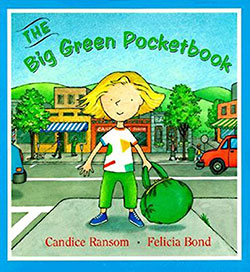
After several months, I realized New York didn’t recognize I was the Next Big Thing. I’d actually have to write my second book and sell it. Timing was on my side. It was the early 80s, when paperbacks filled mall bookstore racks. Series books with new titles each month, priced for kids, were the Next Big Thing. My second and third and many more books were original paperbacks. Multiple publishers (though still not Lothrop, Lee, and Shepard) kept me busy.
I branched out to nonfiction, hardcover fiction, biography, and picture books. For years I worked on contract projects during the week and spent weekends creating new books to submit myself. At one point, I had six publishers. I thought it would last forever: the work, the money, the opportunities.
Then things began to change. Conglomerates like Time-Warner and Gannett took over smaller publishing houses, herding them together like sheep. My beloved Lothrop, Lee, and Shepard folded. Schools, the backbone of children’s book publishing, staggered from the Whole Language Movement to Back to Basics to Common Core. Catsup was considered a vegetable in school lunches. Budgets were cut.
Then came Harry Potter with its hordes of fans and subsequent movies and merchandising, a tsunami that flattened mid-list writers like me who’d been writing stories for average readers. Before I could stand up, Twilight and The Hunger Games sucked the market into YA. The digital age nearly drowned us all and the Big Five publishing houses required agented submissions. Children’s writers were definitely not in Kansas anymore.
Last month, I turned 65. I’ve been writing children’s books for 35 years. I’m still afloat, but my career isn’t what I envisioned back in the 80s and 90s when I wrote between four and six contracted books a year, as well as projects I created on my own. Back then I looked forward to being in my sixties, leisurely penning one novel a year, and living off royalties from my previous books. Pfffft!
How have I stayed alive? By being flexible. I moved from middle-grade fiction to picture books to nonfiction to easy readers to biographies … I’ve published everything from board books to YA. Skipping around made me difficult to categorize, which has been a detriment at times. But I relished doing different books, learning new things. I believe flexibility has kept me fresh in an ever-changing field. (Also, as my husband says, I don’t take “no” for an answer.)
 2017 brought another milestone. The Big Green Pocketbook has been in print continuously for 25 years, attaining classic status. This simple little picture book did not blow out of the water when it first came out in 1993, yet has sold steadily, without fanfare. No one had any notion it would do so well.
2017 brought another milestone. The Big Green Pocketbook has been in print continuously for 25 years, attaining classic status. This simple little picture book did not blow out of the water when it first came out in 1993, yet has sold steadily, without fanfare. No one had any notion it would do so well.
Despite publishers’ efforts today to tout the Next Big Thing, no one can predict what book will catch on. They can give a book a huge push with tours and other promotion, but there’s no guarantee extra publicity will pay off. In my mind, I don’t picture mobs of kids jostling in line for a hot book. I see one child sitting on a sofa with a book on her lap, quietly entering the space between writer and reader.
It’s that image, rather than the illusion of big bucks and fame, that draws me to my desk day after day, year after year. I simply do the work I’m meant to do. And copy machines everywhere are grateful.
